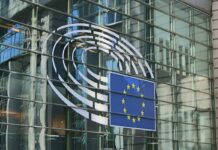
On December 2, the attention of the international community will be drawn to the state of the climate, and to action that can prevent the ecological catastrophe that is threatening us over the coming several decades. The UN Climate Change Summit – COP24 is about to start in Katowice. The event will gather over 25,000 participants, including delegations from 196 countries, and it will last almost two weeks until mid-December. The commercial real estate sector is developing mostly in the sustainable way, but the decisions that will be made during COP24 will undoubtedly affect the direction of its further growth.
Decisive change is a must
Global warming is nothing new in international debate, but the report published at the beginning of this year by the Intergovernmental Panel on Climate Change (IPCC) drew alarming conclusions. The document claims that in order to avoid potentially catastrophic consequences, such us increasingly harmful floods, hurricanes, droughts etc. action has to be taken immediately in order to prevent further growth in global temperatures. In practice, this means the reduction of greenhouse gas emissions by 50% until 2030, and within the next 20 years a complete elimination of emissions into the atmosphere. By 2050, energy should come only from non-coal sources, which implies a need for greater renewable resources, for example solar energy, and greater focus on new energy efficiency technologies.

“The real estate sector has its own kind of commitment to climate change. European Commission data shows that 40% of energy in the EU is used in buildings, but the use of property generates emissions of carbon dioxide at the level of 36%. This state will continue to evolve. According to the EU directive on energy performance of buildings, after December 31, 2020, all new buildings within the EU must be nearly zero emissions building (nZEB),” says Andrzej Gutowski, Associate Director Building Consultancy Services | Green Building Certification, Colliers International.
Developers that operate on commercial real estate markets have already been taking action to certify their office buildings, shopping centres and warehouses within international assessment schemes – in Poland the most popular are BREEAM and LEED. What do the environment, users and investors get out of it?
Modern means ecological
The most popular certification schemes used in Poland are Anglo-Saxon in origin – BREEAM comes from the United Kingdom, LEED from the United States – and they have a global range. Their task is to assess the influence that a building has on the natural environment and its users.
A certificate can be applied for at any stage of building’s existence. In the case of a new building, it is possible to receive a New Construction certificate, usually divided into two phases. In the initial phase (Interim) a closer look is taken at the site from the perspective of its later energy consumption needs. Some factors that play a great role here, such as compact orientation of the building, installations, building materials and construction methods. After the building is delivered, it is possible to apply for the Final certificate, which confirms that solutions declared earlier in the design stage have been implemented properly. However, buildings already in use can receive In-Use certification, which assesses actual use parameters, use of utilities, quality of the internal environment and users’ awareness of the use of advanced technologies. Unlike the system for new buildings, In-Use certificates are not issued for an unlimited time. They need to be renewed (BREEAM every 3 years, LEED every 5 years) and so, after some time building may need modernisation, which from owners’ and property managers’ points of view can be a great challenge.
“For the owners, property managers and tenants of commercial properties point of view, green certificates have always been prestigious and of great business value. Nowadays, the certification of newly-built office buildings in Poland is standard, even though it requires fulfilling higher criteria due to current legal standards. Today, when governments have to start reacting very fast to the deteriorating climate situation – which is on the COP24 agenda – environment-friendly solutions will give green buildings and their owners a great advantage,” says Andrzej Gutowski.
Green solutions
What is the difference between a certified and a typical building? First of all, there are substantial energy effectiveness, which translates into reduced energy needed to heat, cool and light up the building. Other differences include economic water management, taking greater care of the internal environment as well as waste reduction and its re-use. To implement these goals, modern technologies are used that operate automatically and adapt flexibly to the conditions present in a building’s rooms, such as the number of people inside. At the design stage, it is important to look for a location that provides easy access to public transport and the use low carbon footprint materials, which means using a low amount of energy in the production process, transport etc. In practice, efforts made by investors and building managers creates lower costs and greater comfort for those spending time in these type of buildings. The complex assessment system allows the real impact that these building have on the natural environment to be estimated.
Poland as the regional leader in sustainable construction
Changes in the real estate sector will occur faster than we expect, but even now the situation in Poland is quite good compared to the entire region. Polish Green Building Council (PLGBC) data from the end of 2017 shows that 48% of all buildings in Poland are certified (within BREEAM and LEED, but also DGNB, HQE or WELL systems), which makes us the regional leader in sustainable construction. If we take a closer look, about 62% of modern office surface available at the end of 2017 was certified, and 33% for retail space.

















